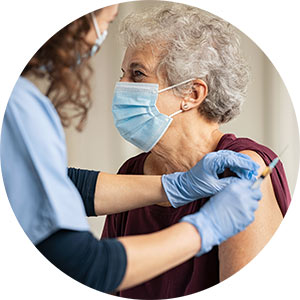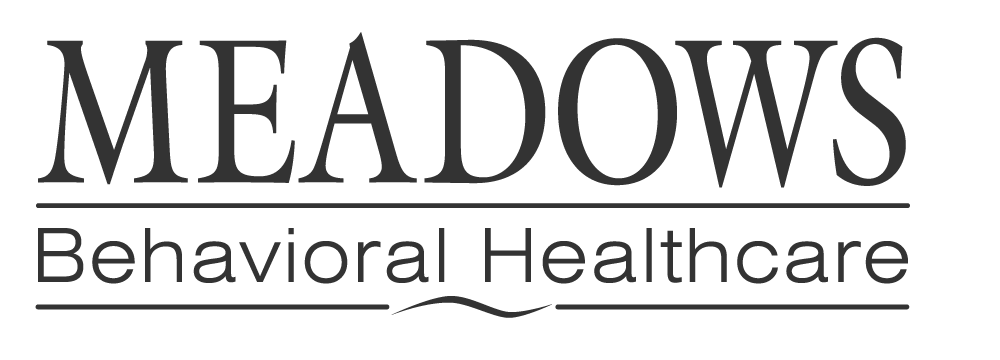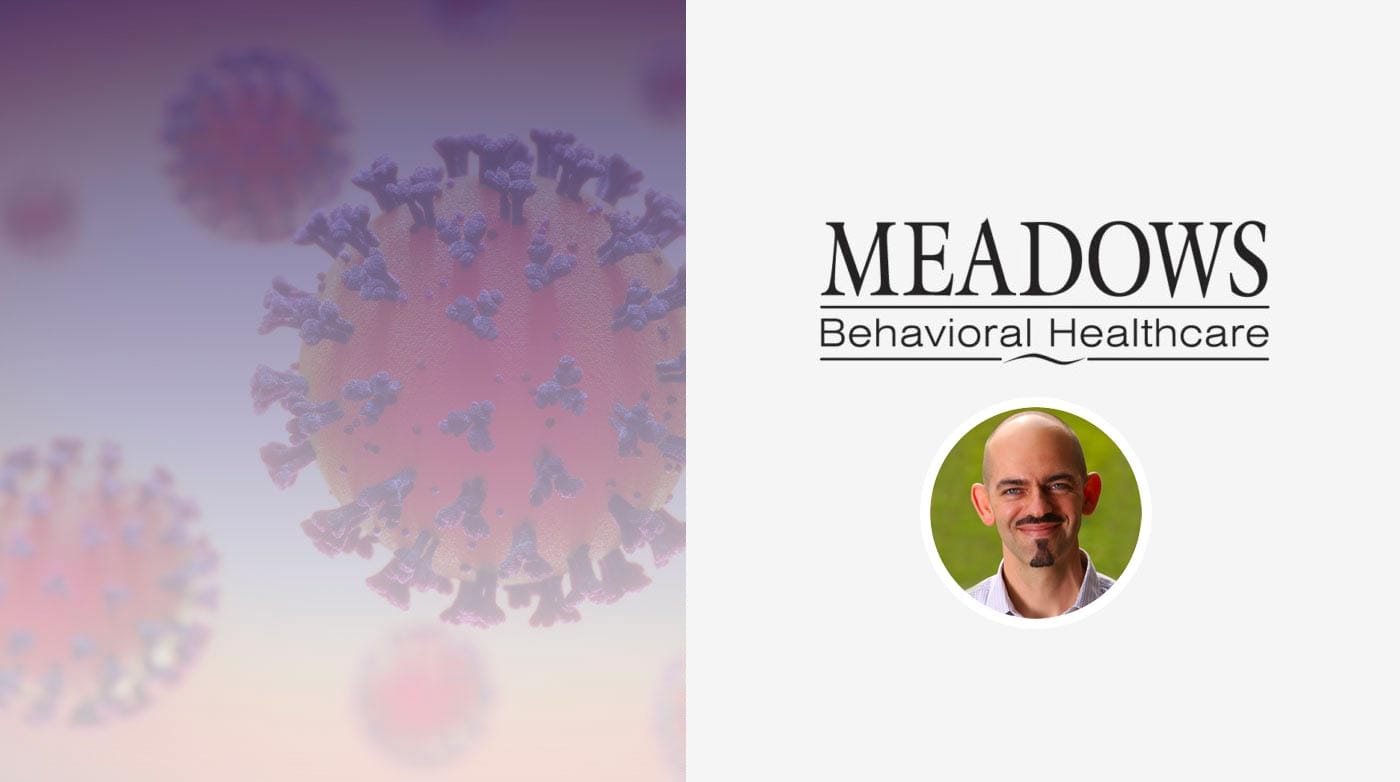By Dr. Jon Caldwell
Chief Medical Officer, Meadows Behavioral Healthcare
In 1978, prior to entering the first grade, I received my vaccination for measles, mumps, and rubella (MMR). The nurse who administered the shot hid the needle behind her back and curtly instructed me to get on all fours on the exam table and pant like a dog. While doing my best dog impression, she quickly lowered my polyester trousers and shot me in the right butt cheek. I’m embarrassed to admit that it wasn’t until years later that I realized the panting wasn’t necessary for the shot to work, it was merely a distraction technique. Well, it worked … both the technique and the vaccination.
That very same year, the CDC set a goal to eliminate measles by 1982 in the United States. Prior to the measles vaccine, it is estimated that the measles burden in the U.S. was several million cases a year, with 400 to 500 deaths, 48,000 hospitalizations, and 1,000 cases of encephalitis. We didn’t meet that goal, but after the recommendation of a measles booster shot, by 2000 the U.S. announced it had eliminated endemic measles. Yet, concerns about MMR vaccine safety and efficacy (including debunked claims that it causes autism) have resulted in dips in vaccination rates and recent outbreaks in 28 states involving more than a thousand cases. Like me, you may remember getting your MMR shot, but thanks to the vaccine, most of us don’t have memories of measles-related illness and death.
…the pandemic and its ripple effects have had a significant impact on rates of drug and alcohol use, mental illness, overdose-related deaths, and suicide. Unfortunately, we are witnessing an historic public health crisis…
On February 22, 2021, nearly a year into the COVID-19 pandemic, the U.S. reached a staggering milestone of 500,000 known coronavirus deaths. The devastating health and economic effects of this pandemic and the tragic loss of life have been felt by all of us, with Black, Latino, and Native American communities being disproportionally impacted. For those of us in the behavioral health field, it is important to note that the pandemic and its ripple effects have had a significant impact on rates of drug and alcohol use, mental illness, overdose-related deaths, and suicide. Unfortunately, we are witnessing an historic public health crisis and it is incumbent upon all of us to do all that we can to help ourselves and each other pull through it.
There does seem to be some emerging good news, though! The national and global statistics regarding COVID-related new cases, hospitalizations, and deaths appear to be trending downward. While it is too early to tell if the COVID-19 vaccinations are partly responsible for this welcome trend, there is no doubt that we are in a much better place now that we have several vaccinations. However, as we have seen with measles, having vaccines and people actually receiving the vaccines are two different things. So, to help us all make informed healthcare decisions, let’s discuss the different vaccines and look at their mechanism of action, safety, and efficacy.
Available Vaccines and How They Work
 In December of 2020, the FDA issued Emergency Use Authorization for two COVID-19 vaccines: Pfizer-BioNTech and Moderna. These vaccines are based on recently pioneered technology utilizing messenger RNA, or mRNA, which cause the body to produce copies of just one part of the coronavirus: the spike proteins. The vaccine doesn’t contain any viral material and the spike proteins that the body produces from the mRNA do not make people sick. However, when the body detects these “foreign” proteins, it produces antibodies against them, which the body can later use to fight an actual infection by live COVID-19 virus. The Pfizer-BioNTech and Moderna vaccines require special refrigeration and are fully effective when given in two doses, 21 and 28 days apart, respectively.
In December of 2020, the FDA issued Emergency Use Authorization for two COVID-19 vaccines: Pfizer-BioNTech and Moderna. These vaccines are based on recently pioneered technology utilizing messenger RNA, or mRNA, which cause the body to produce copies of just one part of the coronavirus: the spike proteins. The vaccine doesn’t contain any viral material and the spike proteins that the body produces from the mRNA do not make people sick. However, when the body detects these “foreign” proteins, it produces antibodies against them, which the body can later use to fight an actual infection by live COVID-19 virus. The Pfizer-BioNTech and Moderna vaccines require special refrigeration and are fully effective when given in two doses, 21 and 28 days apart, respectively.
By the end of February 2021, The FDA is expected to issue an Emergency Use Authorization for the Johnson & Johnson vaccine, which uses a genetically modified common-cold virus (adenovirus) that has a spike protein like COVID-19 and therefore causes the body to generate antibodies that can be used to generate an immune response to corona-virus infection. Importantly, the Johnson & Johnson vaccine can be stored in traditional refrigeration units, requires only one dose, and is fully effective after 28 days.
Safety of COVID-19 Vaccines
Evidence strongly suggests that the COVID-19 vaccines are safe. This evidence comes from 1) tens of thousands of participants who received the vaccines during clinical trials, 2) the FDA’s rigorous review of the science to authorize emergency use of the vaccines, and 3) an elaborate vaccine side effect and adverse event reporting system for the 52 million vaccine doses that were administered in the U.S. between December 14, 2020 and February 14, 2021.
Many people experience mild side effects to the vaccines, including pain or swelling at the injection site, headache, chills, fatigue, or fever. These symptoms are normal signs that your body is building protection and they should go away in a few days. A small number of people have had an allergic reaction after vaccination, but this is extremely rare. After receiving the vaccination, people remain at the site for 15 minutes to be monitored and, if needed, treated by healthcare professionals. In the U.S., there have been no deaths conclusively linked to the vaccines.
Efficacy of COVID-19 Vaccines
There is strong evidence that the current COVID-19 vaccines are safe and extremely effective in preventing serious illness, hospitalization, and death.
Researchers have turned attention to a critical question in the fight against coronavirus: Do the vaccines prevent asymptomatic infection and transmission? Evidence suggests that viral load may be a proxy for infectiousness and transmissibility and preliminary data suggests that viral load is reduced following the Pfizer-BioNTech vaccine. Also, a recent study from the UK found that two doses of the Pfizer-BioNTech vaccine reduces someone’s chances by 86% of developing an infection that they could pass along. A very recent study from Israel (that hasn’t been fully released) found an 89.4% reduction in transmissible infections in people who received the Pfizer-BioNTech vaccine. While still preliminary, these results suggest that the vaccines may reduce asymptomatic infections and transmission of COVID-19.
Summing It All Up
The fight against infectious diseases that cause terrible suffering and death is not a new phenomenon – there are valuable lessons we can learn from the past. One of them is that vaccines work! There is strong evidence that the current COVID-19 vaccines are safe and extremely effective in preventing serious illness, hospitalization, and death. Moreover, preliminary data suggests that these vaccines may also reduce viral load and asymptomatic infections, thereby reducing the rate of transmission. Until we reach a critical percentage of people who have been vaccinated, we must all continue to practice good handwashing, mask-wearing, and social distancing – even those of us who have been vaccinated. We can’t let up yet – it’s critical that we keep pushing to save as many people as possible. Don’t hesitate – let’s vaccinate!


